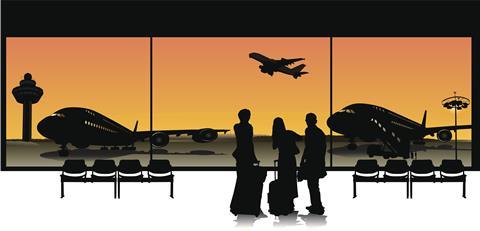The pitfalls to buying business travel insurance for employees are plenty. But insurers have taken note and are offering blended but robust and bespoke coverage, says Ian Robinson, head of UK personal insurance, AIG


From nat cat, criminalisation, crises, kidnap and ransom to pandemics, travellers are exposed to a growing number of complex risks, extending far beyond medical assistance. So how is the insurance industry helping?
Traditionally, companies would purchase more than one insurance policy to ensure coverage for a range of perils – business travel insurance and medical assistance, crisis insurance (K&R), travel security, and personal accident coverage, for instance. But without bringing all stakeholders together into a co-ordinated approach before purchasing insurance, businesses remain at risk of buying too much coverage.
Then there is the complexity of ensuring the right providers and services are in place to effectively respond to a travel incident or provide the required assistance to settle a claim. This becomes even trickier when several insurers are involved.
Businesses saw the pitfalls of their travel insurance arrangements following the ‘Arab Spring’, when a series of anti-government protests, uprisings and armed rebellions spread across the Middle East in late 2010.
Many businesses that needed assistance from their insurers found a lack of co-ordination and teamwork because they had procured coverage from several different insurers – all of whom were concerned only with their own part in the claims process, rather than working together.
Poor communication, different time zones and complex relationships led to many companies feeling frustrated and confused. Even worse, it meant that solutions worked poorly, and in a lot of instances, the claims process was especially hard to navigate.
Work together seamlessly
But insurers are listening. Many have evolved and enhanced offerings, bringing together all relevant policies into one product to better cater for the myriad travel risks – from medical advice and vaccinations to evacuation, crisis cover and security services.
It is critical that risk managers choose a provider with robust infrastructure and best-in-class solutions in all the areas that need coverage. Risk managers need leading crisis insurance, and business travel, as well as an in-house support system.
It is vital that insurers do not just blend different capabilities but build in predictive consultancy and services. The same company is organising your medical treatment on the ground as well as providing security, repatriation, and organising payments and claims processes. Claims teams, assistance and emergency teams must work together.
One number to call
One concern that risk managers have raised is the notion that blended insurance products might mean lighter coverage – but this should not be the case.
Brokers can play a valuable role here. If a risk manager wants to buy one end-to-end travel product, they need to be reassured that, for instance, the crisis insurance element of the cover is as thorough as if it had been bought individually. Brokers can help their clients probe each aspect of the insurance product to ensure that it is fit for purpose.
Moreover, having one team working together is a lot more effective. It’s easier to identify the real problems, and a business or staff member only needs to phone one number to get everything sorted.
It is critical that risk managers choose a provider with robust infrastructure and best-in-class solutions in all the areas that need coverage. Risk managers need leading crisis insurance, and business travel, as well as an in-house support system
Internal harmony is critical for end-to-end insurance products to work and businesses need to be reassured that the solutions is truly blended rather than different departments fudging elements of cover together.
For organisations to get the most out of a blended solution, it is equally critical that they work internally to make sure that different internal departments are also working closely together. It is crucial, for instance, to ensure that relevant departments outside of risk management are aware of the cover and know what the benefits are.
While a risk management team may understand the specifics of a crisis insurance policy, the security team may not. If your security department doesn’t understand that the disappearance clause in your cover allows them to spend $50,000 to carry out searches, they won’t be getting the full benefit of the solution.
Risk managers must work with everyone from IT and security to HR departments to explain what insurance has been bought, and what is included with it.
Only then, when a product is truly blended and the company buying it is leveraging it properly, can a business truly see the value of end-to-end insurance.
This article was written by Ian Robinson, head of UK personal insurance, AIG: IanRobinson.uk@aig.com


